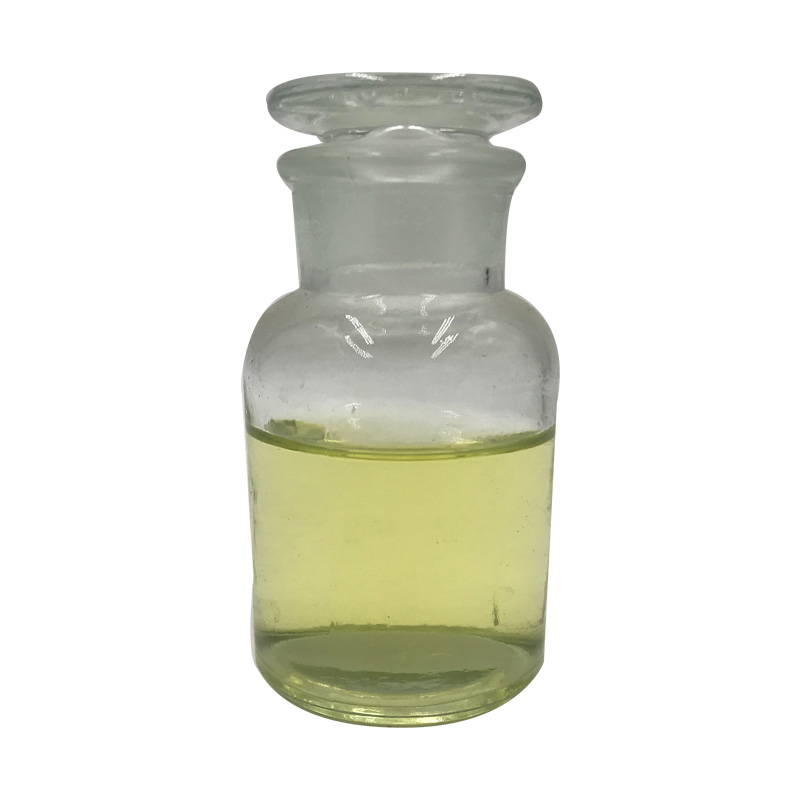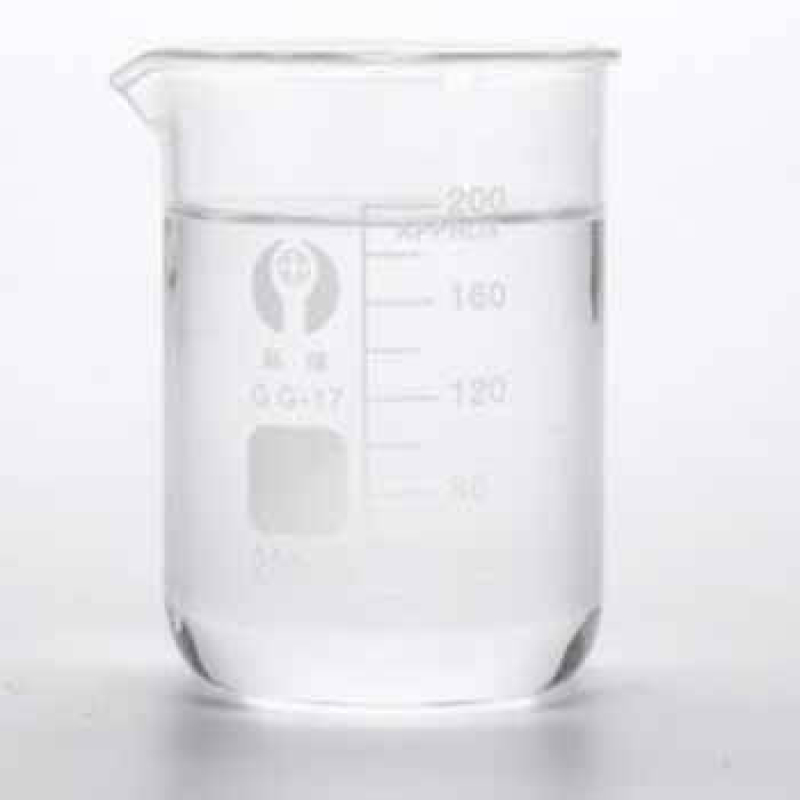Products Description of N-Methyl-2-pyrrolidone CAS#2687-44-7N-methyl-2-pyrrolidone is a nitrogen-containing five-membered heterocyclic compound. It has a wide range of applications due to its following excellent properties: It has high polarity and is completely miscible in most organic solvents (alcohols, ethers, ketones, aromatic hydrocarbons, chlorinated hydrocarbons, etc.). It has high solubility in organic and inorganic substances. It can be miscible with water in any proportion. It has a higher flash point than other similar solvents.
Contact Now
Products Description of N-Cyclohexyl-2-pyrrolidone CAS#6837-24-7N-Cyclohexyl-2-pyrrolidone or CHP is a yellow to colorless liquid. It has a low vapor pressure, and is nearly odorless. It has a low solubility in water, but is soluble in a variety of organic solvents.CHP is used in the electronics industry as a photoresist stripper (usually in combination with other solvents like N-methyl-2-pyrrolidone), and as a chemical polisher of copper in circuit board fabrication.
Contact Now
Products Description of Styrenated phenol CAS#61788-44-1Light yellow to amber viscous liquid.
Contact Now
Products Description of Potassium phosphate CAS#778-53-21-Ethyl-2-pyrrolidone is a transdermal absorption-enhancing compound and mechanism of its effect on multilammellar liposome of stratum corneum lipid has been studied.N-Ethyl-2-pyrrolidone is commonly used as a solvent. It has a low boiling point, which makes it suitable for use in low light and at constant pressure. It is also used as an intermediate in the preparation of polycarboxylic acid.
Contact Now
Products Description of CETEARYL ALCOHOL CAS#8005-44-5Cetostearyl alcohol is in the form of white granules, flakes or blocks, has a greasy smell, and is a transparent oily liquid after melting.
Contact Now
Products Description of N-Methyl-2-pyrrolidone CAS#872-50-4N-Methylpyrrolidone is referred to as NMP, molecular formula: C5H9NO, English: 1-Methyl-2-pyrrolidinone, appearance is colorless to light yellow transparent liquid, slightly smell of ammonia, miscible with water in any proportion, soluble in ether, acetone And various organic solvents such as esters, halogenated hydrocarbons, aromatic hydrocarbons, etc., almost completely mixed with all solvents, with a boiling point of 204°C and a flash point of 91°C. It has strong hygroscopicity and stable chemical properties.
Contact Now
Products Description of Crospovidone CAS#25249-54-1Cross-linked polyvinyl pyrrolidone (PVPP) is a cross-linked polymer that is insoluble in water, strong acids, strong bases and general organic solvents and is polymerized under specific conditions by vinyl pyrrolidone monomers.
Contact Now
Products Description of Triethylamine CAS#121-44-8 Triethylamine (molecular formula: C6H15N), also known as N,N-diethylethylamine, is the simplest homotrisubstituted tertiary amine. It has the typical properties of tertiary amines, including salt formation and oxidation. Triethylamine has no reaction in the Hisberg reaction. It is a colorless to light yellow transparent liquid with a strong ammonia odor and a slight smoke in the air. Boiling point: 89.5℃, relative density (water = 1): 0.70, relative density (air = 1): 3.48, slightly soluble in water, soluble in ethanol and ether.
Contact Now
Products Description of 7-Diethylamino-4-methylcoumarin CAS#91-44-17-Diethylamino-4-methylcoumarin is a vital organic compound with a spectrum of applications, predominantly utilized as a fluorescent brightening agent in the textile and paper industries, enhancing the whiteness and brightness of materials. Our collaboration cases exemplify its integration in improving the luminosity of various products, a testament to its effectiveness in real-world applications.
Contact Now
Products Description of Sodium Hydroxymethanesulphinate CAS#149-44-0Sodium bisulfite formaldehyde is translucent white orthorhombic crystals or small pieces. Apparent density 1.80~1.85g/cm3. Easily soluble in water, slightly soluble in alcohol. It has extremely strong reducing properties under high temperature and can make the dyed color disappear, so it is known as the chemical book of hanging white blocks. It decomposes when exposed to acid, and decomposes at 120°C to produce toxic gases such as formaldehyde and hydrogen sulfide.
Contact Now
Products Description of Sodium hydrogen ferric DTPA CAS#12389-75-2White powder.Sodium hydrogen ferric DTPA Chemical Propertiesdensity 1.607[at 20℃]Water Solubility 113g/L at 30℃LogP-11.9EPA Substance Registry SystemFerrate(2-), [rel-[N(R)]-N-[2-[bis[(carboxy-.kappa.O)methyl]amino-.kappa.N]ethyl]-N-[2-[(S)-[(carboxy-.kappa.O)methyl](carboxymethyl)amino-.kappa.N]ethyl]glycinato(5-)-.kappa.N,.kappa.O]-, sodium hydrogen (1:1:1), (PB-7-13-12564)- (12389-75-2) Factory and Equipment ShowFast delivery timeInventory 2-3 working days New production 7-10 working days
Contact Now
Products Description of N,N-Dimethylaniline CAS#121-69-7N,N-Dimethylaniline (CAS#121-69-7) is an organic compound that presents as a yellow, oily liquid with an amine-like odor. It is characterized by its density of approximately 0.96 g/cm³, a boiling point of 193.5±0.0 °C at 760 mmHg, and a melting point in the range of 1.5-2.5 °C (literature value) .
Contact Now
Products Description of Clavulanic acid CAS#58001-44-8Clavulanate Potassium, trade name potassium clavulanate, is an oxopenicillin β-lactamase inhibitor, which is a β-lactam ring and a hydrogenated isoxazole ring.
Contact Now
Products Description of 6,7-Dimethoxyquinazoline-2,4-dione CAS#28888-44-06,7-Dimethoxy-2,4-quinazolinedione (doxazosin EP impurity D) is a chemical crystalline compound with a melting point of >300°C, an intermediate of prazosin hydrochloride.6,7-Dimethoxyquinazoline-2,4-dione Chemical PropertiesMelting point >300 °C (lit.)Boiling point 363.37°C (rough estimate)density 1.3404 (rough estimate)refractive index 1.6300 (estimate)storage temp. 2-8°Csolubility Aqueous Acid (Sparingly)pka10.27±0.20(Predicted)color White to Off-WhiteWater Solubility i
Contact Now
Products Description of 3-(N-Methylpentylamino)propionic acid hydrochloride CAS#625120-81-2For organic synthesis3-(N-Methylpentylamino)propionic acid hydrochloride Chemical PropertiesMelting point 101-103°Cstorage temp. Sealed in dry,Room Temperaturesolubility Methanol (Slightly), Water (Slightly)form Solidcolor White to Off-WhiteStability:HygroscopicCAS DataBase Reference625120-81-2(CAS DataBase Reference)Factory and Equipment ShowFast delivery timeInventory 2-3 working days New production 7-10 working days
Contact Now
Products Description of N-Methylhomopiperazine CAS#4318-37-0It is a chemical substance with the molecular formula C6H14N2.N-Methylhomopiperazine Chemical PropertiesBoiling point 74-75 °C/35 mmHg (lit.)density 0.918 g/mL at 25 °C (lit.)refractive index n20/D 1.477(lit.)Fp 113 °Fstorage temp. -20°Cpka10.82±0.20(Predicted)InChIInChI=1S/C6H14N2/c1-8-5-2-3-7-4-6-8/h7H,2-6H2,1H3InChIKeyFXHRAKUEZPSMLJ-UHFFFAOYSA-NSMILESN1(C)CCCNCC1CAS DataBase Reference4318-37-0(CAS DataBase Reference)NIST Chemistry ReferenceN-methyl homopiperazine(4318-37-0)Safety InformationH
Contact Now
Products Description of 4-Methyl-2-pentanone CAS#108-10-14-Methyl-2-pentanone (methyl isobutyl ketone) reagent is widely used as a solvent in chemical and pharmaceutical industries, separation and recovery of nuclear fission products, and scientific research experiments. The content of 4-methyl-2-pentanone sold on the market is ≤99%, and it contains a small amount of impurities such as alcohol, acidic substances and water. 4-Methyl-2-pentanone is used as a solvent for nitrocellulose, lacquer, and certain polymers and resins.
Contact Now
Products Description of 1-N',6-N'-dibenzoylhexanedihydrazide CAS#35658-33-4Colorless liquid1-N',6-N'-dibenzoylhexanedihydrazide Chemical PropertiesBoiling point 737.4±56.0 °C(Predicted)density 1.237±0.06 g/cm3(Predicted)pka10.67±0.23(Predicted)Factory and Equipment ShowFast delivery timeInventory 2-3 working days New production 7-10 working days
Contact Now
Products Description of N-LAUROYL-L-GLUTAMIC ACID CAS#3397-65-7N-(1-oxododecyl)-L-glutamic acid (9CI) is a chemical whose English name is L-Glutamicacid, N-(1-oxododecyl)-.N-LAUROYL-L-GLUTAMIC ACID Chemical PropertiesMelting point 95-96 °CBoiling point 543.6±40.0 °C(Predicted)density 1.081±0.06 g/cm3(Predicted)storage temp. Sealed in dry,Room Temperaturesolubility Aqueous Base (Slightly), Chloroform (Slightly)form Solidpka3.46±0.10(Predicted)color White to Off-WhiteLogP2.964 (est)EPA Substance Registry SystemL-Glutamic acid, N-(1-oxododecyl)- (3397-65-7)
Contact Now
Methyl triphenyl phosphonium chloride Chemical PropertiesMelting point 221°C (dec.)Boiling point 332.65℃ at 101.3kPadensity 1.22 at 23℃vapor pressure 0.001Pa at 40℃storage temp. Inert atmosphere,Room Temperaturesolubility Soluble in methanol.form Solid:crystallinecolor White to Almost whiteSensitive HygroscopicLogP-1.73 at 20℃ and pH6.3-6.46Surface tension71.4mN/m at 1g/L and 20℃CAS DataBase Reference1031-15-8(CAS DataBase Reference)Safety InformationHazard Codes Xn;N,N,XnRisk Statements 21/22-38-41-51/53Safety Statements 22-26-36/37/
Contact Now
Products Description of Meglumine CAS#6284-40-8MeglumineChoosing a suitable counter ion for a drug is particularly important for improving the solubility and bioavailability of the drug. Meglumine (N-methyl-D-glucosamine, MChemicalbookeglumine) is a counter ion widely used to improve the solubility of drugs.
Contact Now
Products Description of 5-Methyl-2-Thiophenecarboxylic Acid CAS#1918-79-25-Methyl-2-Thiophenecarboxylic Acid is a colorless, transparent liquid with a melting point of 136-138°C.5-Methyl-2-Thiophenecarboxylic Acid Chemical PropertiesMelting point 135-138 °C(lit.)Boiling point 229.75°C (rough estimate)density 1.365 (estimate)refractive index 1.5300 (estimate)storage temp. 2-8°C(protect from light)pka3.71±0.10(Predicted)form Liquidcolor ClearBRN 113857CAS DataBase Reference1918-79-2(CAS DataBase Reference)NIST Chemistry Reference5-Methyl-2-thioph
Contact Now
Products Description of 2-Chloropyridine-N-oxideCAS#2402-95-12-Chloropyridine-N-oxide is an important compound in pyridine nitrogen oxides. It is an important intermediate for pesticides, medicines and daily chemical products. It is also an important intermediate for the synthesis of skin cleansers, shampoos and pyrithione and other antiseptic and antifungal fungicides. It is an essential raw material for the synthesis of 2-chloro-4-nitropyridine, an important intermediate for the synthesis of phenylurea plant growth regulators.
Contact Now
Products Description of 1-Chloroisoquinoline CAS#19493-44-81-Chloroisoquinoline can be used as a pharmaceutical synthesis intermediate, such as the preparation of the compound 1-phenylisoquinoline.
Contact Now

































